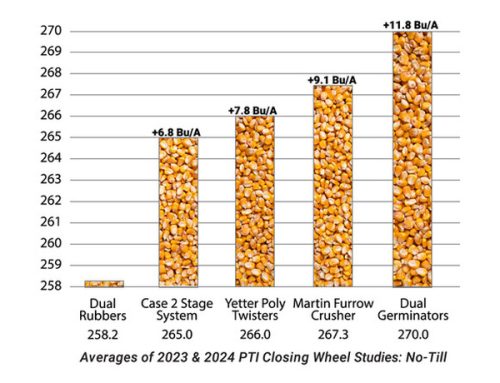By Ryan Hanrahan, University of Illinois’ FarmDoc project
Reuters’ Ella Cao and Lewis Jackson reported that “China imported no soybeans from the U.S. in September, the first time since November 2018 that shipments fell to zero, while South American shipments surged from a year earlier, as buyers shunned American cargoes during the ongoing trade dispute between the world’s two largest economies.”
“Imports last month from the U.S. fell to zero from 1.7 million metric tons a year earlier, data from China’s General Administration of Customs showed on Monday,” Cao and Jackson reported. “Shipments fell because of the high tariffs China has imposed on U.S. imports and as previously harvested U.S. supplies, known as old-crop beans, have already been traded. China is the world’s biggest soybean importer.”
“‘This is mainly due to tariffs. In a typical year, some old-crop beans would still enter the market,’ said Wan Chengzhi, an analyst at Capital Jingdu Futures,” Cao and Jackson reported.
“Brazil arrivals last month jumped 29.9% year-on-year to 10.96 million tons, accounting for 85.2% of China’s total imports of the oilseed, customs data showed, while shipments from Argentina rose 91.5% to 1.17 million tons, or 9% of the total,” Cao and Jackson reported. “China’s soybean imports reached 12.87 million metric tons in September, the second-highest level on record.”
China Working to Curb Reliance on U.S. Soy
The Washington Post’s Christian Shepherd and Lyric Li reported that “China has worked hard to curb its reliance on U.S. soy imports, especially after the trade conflict of Trump’s first term ended in 2020 when Beijing agreed to buy $200 billion in American products, including soybeans (although it bought far less than it promised.)”
“Beijing has since pushed Chinese farms to consolidate and expand domestic output. It has launched trial programs for previously banned genetically modified crops. And it is aiming to lower the ratio of soybeans in animal feed to 10 percent by 2030, down from 18 percent in 2017,” Shepherd and Li reported. “A Ministry of Agriculture report released in May said that these efforts meant import demand would steadily fall over the coming years.”
“But thanks to limited farming land and ballooning demand, China it is still a long way from its goals to meet half of its soybean needs with domestic crops and will rely on imports for years to come, analysts said,” Shepherd and Li reported. “…Chinese analysts are blunt about their country’s growing preference to buy from anywhere but the U.S.”
“‘From China’s perspective, the U.S. is an unpredictable supplier,’ said Niu Haibin, director of the Center for Latin America Studies at Shanghai Institutes for International Studies,” Shepherd and Li reported. “Tariffs mean U.S. soybeans no longer have a price advantage and China has already identified alternative suppliers to fill the gap. ‘The longer we rely on alternative sources, the dimmer the outlook for U.S. soybean exports to China becomes,’ Niu said.”
Current U.S.-China Trade Status
CBS News’ Kathryn Watson reported that “President Trump said Monday during a meeting with Australian Prime Minister Anthony Albanese that he plans to visit China ‘fairly early next year.’ Mr. Trump said he still plans to meet with Chinese President Xi Jinping at the Asia-Pacific Economic Cooperation summit later this month in South Korea.”
“Earlier this month, the president threatened an additional 100% tariff on Chinese imports by early November, citing new Chinese export controls — marking a significant escalation in the U.S.-China trade war,” Watson reported. “In his meeting with Albanese, Mr. Trump said the higher tariff rate would go into effect Nov. 1, if the U.S. and Beijing can’t reach a deal. But he expressed optimism about the prospects of an agreement, telling reporters that China has been very ‘respectful’ and is paying the U.S. ‘tremendous amounts of money’ in tariffs.”
“Tariffs on Chinese imports currently stand at 30%,” Watson reported. “Mr. Trump has said the U.S. would also impose export controls on ‘any and all critical software’ starting next month.”



